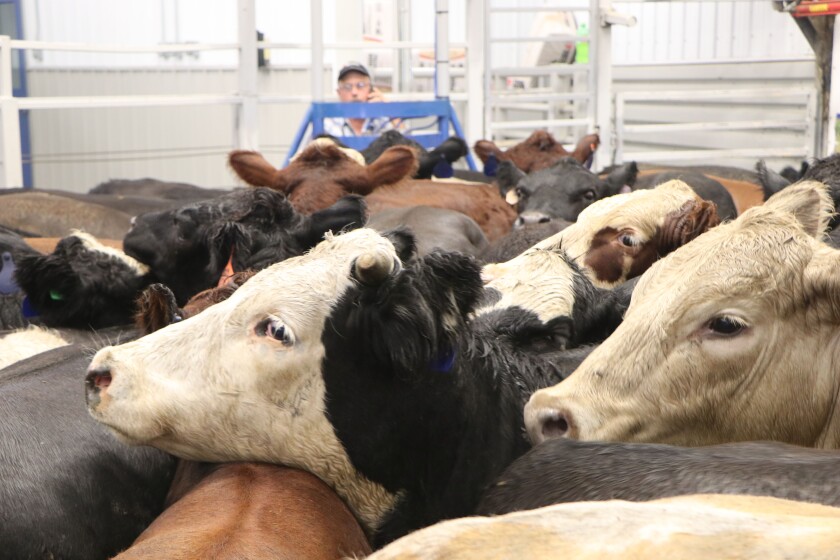Equip Your Service: Bagley Risk Management Insights
Equip Your Service: Bagley Risk Management Insights
Blog Article
Recognizing Animals Threat Defense (LRP) Insurance Policy: A Comprehensive Overview
Browsing the world of animals threat protection (LRP) insurance can be a complex endeavor for lots of in the farming field. From how LRP insurance functions to the various coverage options available, there is much to uncover in this extensive guide that could potentially shape the means animals manufacturers come close to danger monitoring in their companies.

Exactly How LRP Insurance Policy Functions
Sometimes, recognizing the technicians of Livestock Danger Security (LRP) insurance can be complex, however breaking down exactly how it works can supply quality for farmers and herdsmans. LRP insurance is a risk management tool developed to secure animals manufacturers versus unforeseen cost declines. It's essential to note that LRP insurance is not an earnings warranty; rather, it focuses entirely on price risk protection.
Eligibility and Coverage Options

When it comes to protection alternatives, LRP insurance coverage offers manufacturers the flexibility to select the coverage level, insurance coverage period, and recommendations that finest fit their risk administration needs. By recognizing the qualification standards and insurance coverage alternatives offered, animals producers can make educated decisions to handle danger efficiently.
Pros and Cons of LRP Insurance
When assessing Livestock Threat Security (LRP) insurance coverage, it is essential for livestock manufacturers to evaluate the negative aspects and benefits intrinsic in this risk monitoring device.

One of the primary advantages of LRP insurance coverage is its capability to give protection against a decline in livestock costs. Additionally, LRP insurance coverage uses a degree of adaptability, permitting producers to customize insurance coverage levels and policy periods to suit their particular requirements.
Nevertheless, there are likewise some disadvantages to think about. One restriction of LRP insurance policy is that it does not shield versus all kinds of threats, such as condition break outs or natural calamities. Premiums can occasionally be pricey, specifically for producers with large animals herds. It is crucial for manufacturers to carefully assess their specific threat direct exposure and monetary situation to establish if LRP insurance policy is the best threat administration tool for their procedure.
Understanding LRP Insurance Coverage Premiums

Tips for Optimizing LRP Advantages
Taking full advantage of the benefits of Animals Risk Protection (LRP) insurance policy needs tactical preparation and aggressive danger administration - Bagley Risk Management. To maximize your LRP protection, think about the navigate to this website complying with ideas:
Routinely Assess Market Conditions: Stay informed regarding market patterns and rate fluctuations in the livestock industry. By checking these variables, you can make enlightened decisions about when to buy LRP insurance coverage to shield against potential losses.
Set Realistic Protection Levels: When choosing protection levels, consider your production expenses, market price of animals, and prospective threats - Bagley Risk Management. Establishing reasonable coverage levels guarantees that you are adequately protected without overpaying for unneeded insurance
Expand Your Insurance Coverage: Rather of depending exclusively on LRP insurance policy, think about expanding your threat monitoring methods. Integrating LRP with other threat monitoring tools such as futures contracts or alternatives can supply detailed coverage versus market unpredictabilities.
Evaluation and Change Coverage Routinely: As market conditions transform, occasionally assess your LRP insurance coverage to guarantee it straightens with your existing danger direct exposure. Changing insurance coverage levels and timing of purchases can assist enhance your danger security strategy. By complying with these ideas, you can make best use of the advantages of LRP insurance coverage and secure your animals operation against unexpected dangers.
Conclusion
To conclude, livestock danger security (LRP) insurance is a useful tool for farmers to handle the economic dangers related to their animals operations. By comprehending how LRP works, qualification and protection options, along with the pros and disadvantages of this insurance coverage, farmers can make informed decisions to safeguard their incomes. By carefully thinking about LRP premiums and implementing strategies to make best use of advantages, farmers can alleviate potential losses and ensure the sustainability of their procedures.
Animals manufacturers interested in getting Livestock Risk Security (LRP) insurance coverage can discover an array of qualification standards and coverage options tailored to their particular livestock operations.When it comes to protection choices, LRP insurance coverage uses manufacturers the versatility to select the protection level, coverage period, and recommendations that ideal match their threat monitoring demands.To realize the details of Animals Threat Security (LRP) insurance coverage completely, comprehending the elements influencing LRP insurance premiums is crucial. LRP insurance costs are established by numerous aspects, including the coverage degree selected, the expected rate of animals at the end of the protection period, the kind of livestock being insured, and the size of the insurance coverage period.Evaluation and Adjust Insurance Coverage Regularly: As market problems alter, periodically review your LRP insurance coverage to guarantee it aligns with your current threat direct exposure.
Report this page